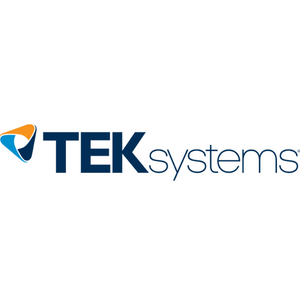How Parents Perceive IT Technology and Careers: Myths and Misconceptions
By Cecily Kellogg
When middle- and high-school students begin to consider potential career paths, parents can serve as vital sources of information, guidance, and support. Parents can have a significant impact on their children’s career choices, including those related to technology, through their beliefs and opinions, both positive and negative.
Myths and misinformation about the tech industry, however, may color parental views and may serve to divert students away from potentially rewarding careers in technology. To better understand the parents of today’s middle- and high-school students and their opinions on technology as a career, CompTIA and CompTIA Spark asked more than 1,000 parents of middle- and high-school students for their thoughts.
A Strong Foundation (with Room to Grow)
Overall, parents have an overall positive impression of the technology industry, its current status, and its prospects for the future. In the study, 67% believed that the tech industry was moving in a positive direction. Interestingly, the data suggests that parents have a brighter view of the tech industry than students, 56% of whom shared their parents’ positive opinion in a different study. While 67% is a strong base, the study noted that 20% of parents were neutral on technology as a potential career for their children, and that 15% held negative views on tech. These numbers leave significant room for improvement.
The results also noted a gender gap: parents of high-school age boys (70%) were more positive about careers in tech than were parents of girls (63%) the same age.
In addition, parents of children who were already considering technology careers were more positive about tech careers compared with parents of children who were ahead of their classmates in tech proficiency (but were not considering tech careers). A more favorable view of technology’s future was also linked to increased household income.
Common Myths and Misconceptions
When parents were asked about the reasons for their negative views of technology and tech careers, some interesting themes emerged:
- 58% cited privacy concerns, particularly control of personal data.
- 57% believed apps and devices are too distracting (this concern was greater among middle-school parents than parents of older kids).
- 52% noted growing cybersecurity risks.
- 49% cited cyberbullying and a general lack of civility online.
These responses suggest that many parents see technology not as a tool for learning or career development but as a source of distraction. There is reason to be hopeful that, if these negative views can be improved, we can increase the chances that more middle- and high-school students will get to explore careers in technology.
One way that parents can help students have a more positive perception of tech careers and classes is to become a “co-student” role with their children, said John Omundsen, Director of K-12 STEM Education at Oasis Charter Schools, Cape Coral, Fla.
“For example, working through coding tutorials through YouTube at night with their child, parents and child can co-develop a project while learning a new skill together,” Omundsen said. “Seeing their parent engaged in the process, and learning a new skill themselves, could encourage the student to reconsider their initial beliefs.
Tech Career Disconnect?
Parents tended to slightly overestimate their children's’ Interest in tech careers.
- 27% of parents said their children were considering tech careers, while students’ self-reported interest in tech careers was 22%. This “hope factor,” where parents hope their children will find sustaining careers may account for the disparity.
- Over 75% of parents reported that their children take tech classes in school (a higher number among middle-schoolers, compared with high-school students). Kids who take tech classes in middle and high school are more likely to find careers in tech.
- The gender gap persists, with 32% of boys saying they are considering careers in technology, compared with 21% for girls.
Again, there’s room for improvement, especially when promoting tech-positive messaging and educational opportunities to middle-school girls.
So Why Aren’t More Kids Taking Tech Classes?
The study asked parents of children who were not taking any technology classes, why not? Thirty-eight percent reported that their child was not interested in technology (with a greater percentage among parents of girls). Other leading reasons included:
- Insufficient or unavailable resources
- Children have shown little aptitude for tech
- Technology is too hard to learn
- Technology is boring
“Schools need to work to ensure that a wide range of individuals from varying gender and racial backgrounds are included in the narrative of success when discussing opportunities beyond high school,” said Omundsen. “Doing this will allow students to see themselves as represented in the field and may help to challenge preconceived notions about not being able to be successful in a technology career.”
Who Makes the Decision?
When it comes to making a final decision on a career path, 55% of respondents reported that the child is the sole arbiter of that choice. In only 17% of cases was the parent the sole decision-maker, with 33% reporting a joint child-parent decision. About 25% of parents said teachers help their children consider future careers. Guidance counselors also play a role (21%), more so among high-school students (23%) than middle schoolers (14%).
Schools can help by taking an active role in educating students about the wide variety of tech career options.
“Showcasing to students the variety of avenues and career paths available with a background in technology can help students reconsider these pathways,” Omundsen said. “Sharing with students that careers such as videogame design, 3D animation, audio engineering, graphic arts, and even fashion design can all benefit from a solid foundation in technology may make students more apt to sign up for these classes.”
What Would Parents Like to See?
Parents reported wanting to see more concrete examples of what each potential career entails. About 57% reported that their child has access to adequate career-planning resources and counseling at school, meaning nearly half of parents feel their students’ needs are underserved.
Parents also expressed interest in more aptitude testing for their children and more information on bridging the gap between school and career (internships, special programs, etc.).
The Path Forward
Nurturing a student’s interest in technology can be a challenge, especially if parents have negative beliefs about technology, its role in society, and its future as an industry.
Parents of middle- and high-school students can be a great asset when choosing a career path. But persistent myths and concerns remain. By presenting technology positively, both as study in school and as a potential career, educators, administrators, and counselors can encourage students to explore their interest in tech.
The CompTIA Spark curriculum offers assets that spark students’ interest in technology and help them connect their talent and interest with real careers in the field—with focus areas including writing code, robotics and more. The earlier—and the more—that students are exposed to technology and tech careers increases their knowledge and their confidence to pursue tech careers down the road.
“One of the greatest ways we have found to engage parents in understanding the role of technology education on their students is through after school clubs and events,” Omundsen said. “Hosting a STEM night where students can showcase their work and projects, explaining their new learning to parents and community members, is one way to do this. Another is through parent volunteering in after school technology or engineering clubs in which the parents work alongside the students.”

Discover opportunities to use our free tech education curriculum in your classroom.
Save your seat for a complimentary webinar. Sessions slated for April 12 and April 20.






.png?sfvrsn=c09ce815_2)